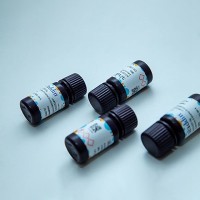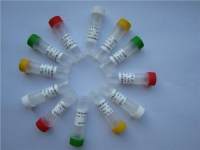Procedures for the Quantitative Protein Determination of Urokinase and Its Inhibitor, PAI-1, in Human Breast Cancer Tissue Extracts by ELISA
互联网
546
The determination of the protein content of urokinase-type plasminogen activator (uPA) and its inhibitor, PAI-1, in breast cancer tissue extracts is used clinically to identify patients at risk to experience disease recurrence (metastasis) or early death. The serine protease uPA, in concert with its inhibitor PAI-1, promotes tumor cell adhesion, migration, and proliferation, as well as extracellular matrix degradation and, thus, facilitates tumor cell invasion and metastasis. The various technical steps to recover uPA and PAI-1 protein from archived breast cancer tissues and to quantitatively determine uPA and PAI-1 protein content in tumor tissue extracts by enzyme-linked immunosorbent assay (ELISA) are described in detail. The technical steps involved require fresh-frozen breast cancer tissue, a dismembrator machine (ball mill) to pulverize the tissue in the frozen state, detergent (Triton X-100) containing Tris-buffered saline to extract uPA and PAI-1 from the pulverized breast cancer tissue, an ultracentrifuge to separate the detergent fraction from cellular debris, uPA and PAI-1 ELISA kits, protein determination reagents, and a 96-well spectrophotometer (ELISA reader) to assess uPA, PAI-1, and total protein in the detergent extract. The uPA/PAI-1 ELISAs and the protein determination format described are robust and highly sensitive. In addition to the macromethod of tissue disintegration, we present a simple but sensitive micro-extraction procedure using cryostat sections or core biopsies as the source of breast cancer tissue. Such a technique allows rapid and quantitative determination of uPA and PAI-1, even in small breast cancer specimens.









